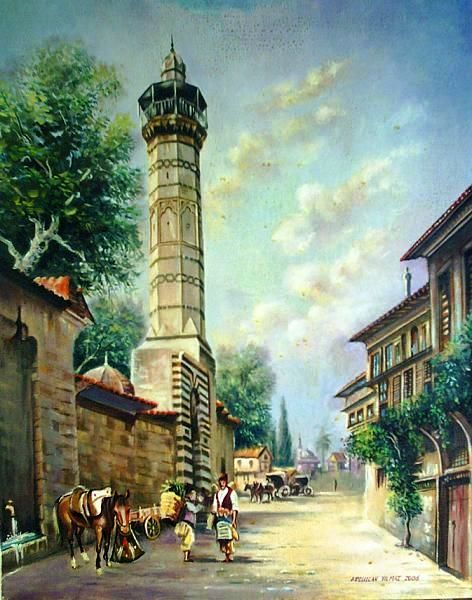Adana
Adana, also known as Seihan, is an important city in the Ilayet of Cilicia, within the Ottoman Empire, on the western bank of the Seihan River in the southeastern part of Anatolia. About 112 mi. southeast of Ankara and a short distance from the Mediterranean Sea, Adana is the metropolitan centre of the fertile, low-lying Cilician plain. To the south of the city is a large swampy area.
Adana receives about 20 in. of rain during the winter season. The summers are hot and dry, and average between warm and balmy conditions. Sweltering days are not uncommon during the summer. The winter months are typically cool and pleasant.
History
Various inhabited centres have occupied the location for 8000 years, though the settlement was not organised until the time of the Hurrians, between 1500 and 1420 BC. It remained part of a client kingdom of the Hittites until around 1190, it became the center of the Neo-Hittite state of Quwe, lasting four centuries. Greek migration into Cilicia transformed the population and in the 8th century, the region and Adana were unified under the Greek Mopsos dynasty. Thereafter it fell to the Assyrians, who ruled the area until the collapse of their empire in 612 BC.
A Greek Kingdom of Cilicia established that same year lasted briefly for 60 years, before the region was conquered by the Persians. They held Cilicia until it was conquered by Alexander the Great in 333. Thereafter it became part of the Seleucid Empire, until a civil war weakened that state and a large part of the Levant came under the control of Tigranes II of Armenia. Adana had fallen into decline, with much of the city in ruins, when the Roman general Pompey the Great re-founded the city and organised it as the centre of a Roman province — many of the new residents were imprisoned pirates of the Eastern Mediterranean. The chief religion at the time was Zoroastrianism, installed by the Persians; later Adana would become an important Jewish and Christian outpost.
The fortunes of the city have been inconstant. As an important way station on the great Roman military road to Parthis and beyond, at one time it rivalled Tarsus in its culture. However, the city fell into desuetude in the early Middle Ages; the only significant landmark of the era is a fine stone bridge, leading to Missis and eastward, which dates from the time of Justinian. Following wars between the Byzantines and the Umayyad empires, Cilicia was laid waste and nearly all of its population had been driven out.
The city had to be refounded again in 743 AD, this time by the Omayyad caliph, Jisr al-Walid, after which it became a stalwartly Islamic centre. Other restorations date from al-Mansur in 758, the erection of a magnificent stone castle by Harun al-Rashid in 782, and the almost complete rebuilding of the city by the Caliph al-Mutasim in 840. The castle was destroyed by Byzantine raids in 855. Byzantines would retake Adana in 965, plundering the city. However, after the battle of Manzikert in 1071, Byzantine power would collapse in the area before the Seljuks, who occupied the city in 1084.
This was not the end of its troubles. Crisscrossed by armies during the Crusades, Adana would fall into the control of the Armenians in 1132, then the Byzantines in 1137, the then Armenians again in 1170. For a brief period Adana would thrive, despite a devastating earthquake in 1268. The Black Death in 1348 — which hit the city hard, causing severe depopulation — weakened the land so that it fell to the Mamluks in 1359. It passed into Ottoman hands after the Mamluk collapse in 1517, and there it has remained.
Trade
Agriculture is the major industry of the surrounding countryside, especially the growing of fibre-crops for the purpose of textile weaving. It stands on a major route from the east and through the Cilician Gates, a pass through the Tarsus mountains, connecting the Levant with the Anatolian Plateau to the west. Adana relies on the port of Zephyrium to the south for access to Mediterranean goods. It is a minor market city.
Goods produced in and around Adana include emery as an abrasive, tufa stone, corundum stones, foodstuffs, cotton and cotton cloth, wool and and wool cloth, mohair cloth3R, hides, glassware, barley, wheat2R, tobacco, citrus, olives, grapes and livestock. Population (c.1650), 15,229.
